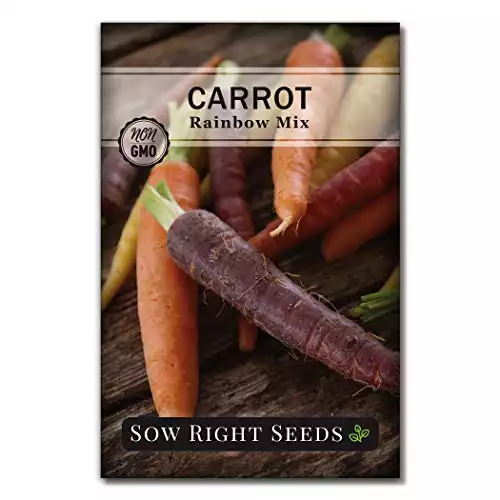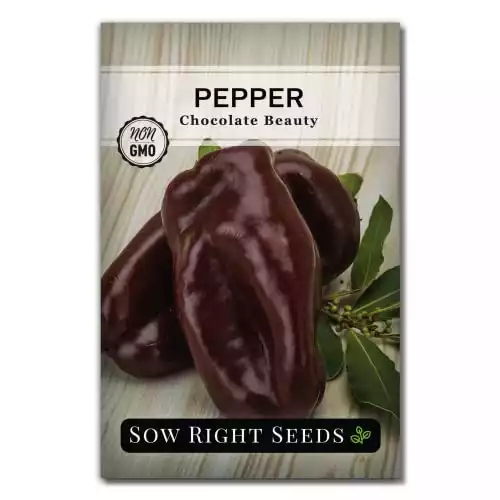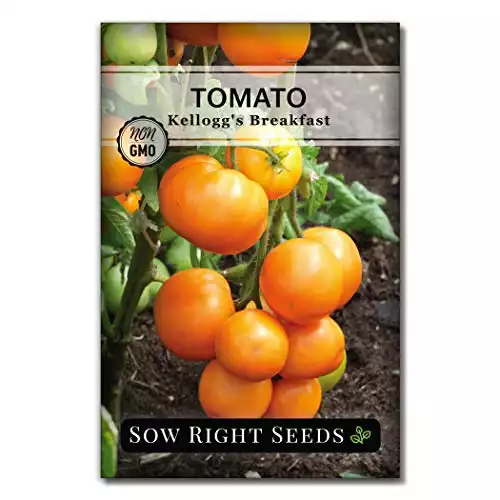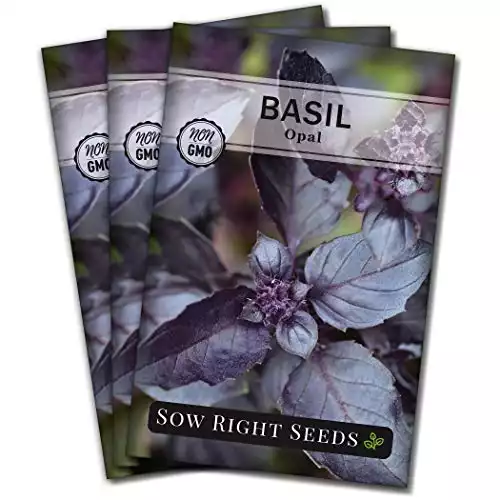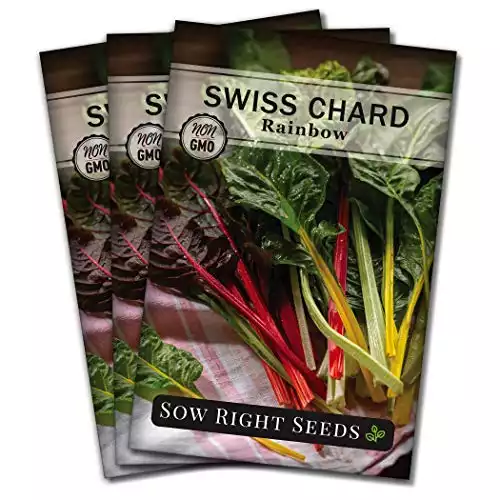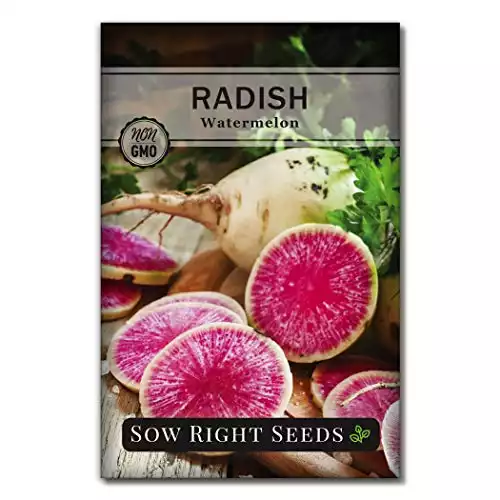Shopping for seeds is one of the best things you can do for your diet, wallet, and the environment.
They’re cheaper than transplants, support sustainable living, and yield healthy and organic produce you can eat straight up.
They’re also delicious, too!
And if you get playful, you can go for heirloom seeds – those passed from generation to generation – that will grow into colorful veggies and provide you with a vegetable patch everyone is jealous of.
The following varieties will give you just that – color, a little bit of envy, and sweet and juicy flavors!
1. Broccoli Romanesco
This veg is a true star of the show. It is very productive and bears five-to-six-inch heads.
Its nutty flavor makes it perfect for various dishes and you can eat it raw, steamed, fried, roasted, etc.
Sow the seeds to a depth of a quarter of an inch and space them about two feet apart. They should germinate in about 8-10 days, just make sure the soil is warm enough and that the plant gets plenty of sunshine.
You can start them indoors 4-6 weeks before transplanting them outside or sow them directly outdoors at the end of summer for a fall harvest.
2. Carrot Rainbow Mix
This seed packet comes with five different carrot varieties and will bring plenty of color to your dishes come harvest.
They’re perfect for spring and fall planting and yield a gourmet flavor of homegrown carrots no store-bought product can compete with.
Sow these heirloom seeds to a depth of a quarter of an inch and space them three inches apart.
If the soil is warm enough, the seeds generally germinate in 2-3 weeks.
Pro tip: Sow the seeds every three weeks for a continuous harvest.
3. Chocolate Beauty Pepper
These brown peppers are a perfect addition to your colorful vegetable plot. They yield an abundance of fruit, tolerate colder nighttime conditions, and are perfect for shorter growing seasons.
Their sweet flesh gets more flavor when it becomes brown, but you can eat them green as well.
Plant the seeds to a depth of a quarter of an inch, space them 2-3 feet apart, and make sure the soil temperature is at least 75°F for proper germination.
The seeds usually take about 2-3 weeks to sprout. Start them indoors about 8 weeks before the last frost or plant them directly outside in particularly hot regions.
4. Cylindra Beet
These beets are perfect space savers. They have cylindrical roots that don’t require as much room as traditional round varieties.
They are incredibly sweet and can be eaten raw, roasted, pickled, added to salads or goat cheese, etc.
Plant the seeds outdoors as soon as the spring weather starts to warm up and they should germinate in about 5-10 days.
Just make sure to plant them a quarter of an inch deep, space them 2-4 inches apart, and make sure to keep the soil constantly moist until the seeds sprout.
Pro tip: Add a thin layer of grass, straw, or coco coir mulch to increase water retention and promote germination.
5. Kelogg’s Breakfast Tomato
This orange beefsteak tomato is perfect for slicing, although you can use it in all sorts of dishes due to its sweet and juicy flavor. It’s nothing like store-bought ones!
Kelogg’s Breakfast tomato is an indeterminate variety, which means it will continue producing fruit until the frost kills it.
Therefore, you can harvest the fruits as soon as they begin to ripen to increase your harvest.
Plant the seeds in warm soil quarter of an inch deep and three feet apart, and they should sprout between 5 to 10 days.
Just make sure to sow the seeds 10-12 weeks before transplanting them outside and harden off the seedlings before moving them outdoors to stress the plant less.
6. Lemon Cucumber
This unique looking cucumber is one of the most famous round cucumber varieties. It doesn’t have a citrusy flavor; it only resembles a lemon.
You can eat it with the skin on when young and enjoy its sweet taste.
To increase production, make sure to train it on a trellis and expose it to full sun.
The lemon cucumber is also more cold-resistant than other varieties and requires about 75 days to ripen.
Sow the seeds indoors 3-4 weeks before transplanting and make sure to space the plants 4-5 feet apart.
They should sprout in 1-2 weeks if you keep the soil warm and constantly moist.
7. Purple Dark Opal Basil
Basil is an essential part of herb gardens, and adding the purple variety to your collection will definitely make your meals unique.
It has that classic basil flavor, so you can use it as a pizza topping, for making pesto, etc.
Grow it on a kitchen counter or in an outdoor herb garden. Just make sure to provide it with plenty of sun and water.
Plant the seeds in a warm and moist substrate and space them 8-12 inches apart, and they should germinate in about 5-10 days.
8. Swiss Chard Rainbow
• 800mg per packet
• Full sun
• Ruby red, dark red, golden, yellow, light green, and white
Dark green leaves and colorful stems make these Swiss chard varieties perfect for everything. They’ll improve the looks of your garden and give more character to your dishes.
These plants taste similar to spinach, are super easy to grow, and can even tolerate hot weather (unlike spinach).
Start the seeds indoors and make sure the soil temperature is at least 70°F. The seeds usually take about 1-2 weeks to germinate.
Once the plant gains in size, you can move it outdoors to a full sun location, space the plants 1-2 feet apart, and water them thoroughly.
9. Tendersweet Orange Watermelon
These sweet orange watermelons could be the best thing you have ever grown.
Plant them on mounds in the hottest corner of your garden when the soil reaches 75°F, water them regularly, and you’ll soon enjoy their delicious 35-pound fruit.
If you live in colder regions, you can start the seeds indoors 2-4 weeks before transplanting them outside. They usually take about 5-9 days to sprout.
Pro tip: Thin the plants to 2-3 plants per mound and make sure to space them at least 6 feet apart.
10. Watermelon Radish
This magic cover crop will do wonders for your garden. It is ready for harvest in as little as 25 days after sowing and it will aerate your soil, making it more suitable for other vegetables.
It is a Daikon variety with a white exterior, although it looks like a watermelon when you slice it. Its spicy flavor is slightly more mellow, but it can still add a fine kick to your salsas and salads.
Sow it outdoors in late summer or early fall, space it 1-3 inches apart, and it should sprout in 5-7 days.Pro tip: Harvest it as soon as it reaches 3 inches (or even smaller) because it turns woody when larger.



